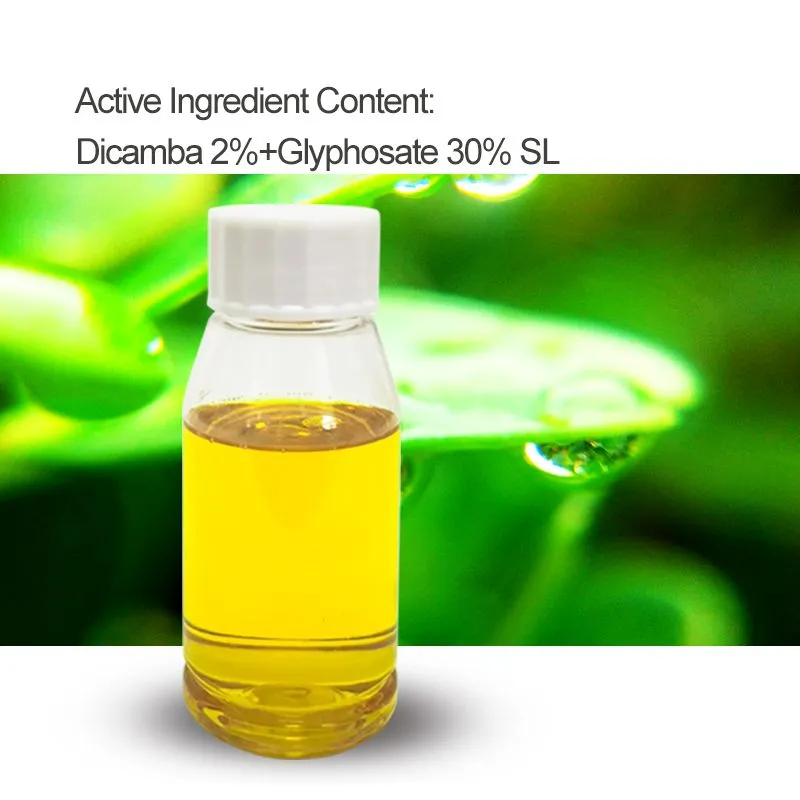
bulk glyphosate
Feb . 20, 2025 08:24
Back to list
bulk glyphosate
Glyphosate Fertilizer Navigating the Complexities of Modern Agriculture
Sustainability is a growing concern in agriculture, and glyphosate is central to this conversation. On one hand, its use supports conservation tillage practices, which reduce soil erosion, conserve water, and decrease greenhouse gas emissions. By minimizing the need for plowing, glyphosate helps maintain soil structure and organic matter, essential components of sustainable farming. On the other hand, the extensive application of glyphosate has raised environmental and health concerns. Its persistence in the environment can lead to biodiversity loss and the development of glyphosate-resistant weed species, challenging its long-term sustainability. Studies exploring its potential carcinogenic effects have prompted rigorous debates, impacting regulatory policies and public perception. Balancing Glyphosate Use with Eco-friendly Practices Recognizing the dual nature of glyphosate in agriculture, a balanced approach is essential. Integrated Weed Management (IWM) strategies are recommended, combining chemical, biological, mechanical, and cultural weed control methods. This holistic approach reduces dependency on glyphosate, mitigating its adverse environmental impacts while preserving its benefits for crop production. The adoption of precision agriculture technologies further complements these efforts. Utilizing data-driven tools and software allows farmers to apply glyphosate more judiciously, thus reducing excess use and minimizing runoff into surrounding ecosystems. These practices ensure that glyphosate remains a viable option within a broader sustainable agricultural framework. Conclusion The Road Ahead for Glyphosate in Agriculture Glyphosate's role in modern agriculture is undeniable, yet its pathway is dotted with challenges that require careful navigation. Continued research and development are necessary to explore alternative weed control measures and improve glyphosate formulations for efficiency and safety. Stakeholders, including farmers, scientists, policymakers, and environmental advocates, must collaborate to establish guidelines that balance agricultural productivity with ecological responsibility. The future of glyphosate hinges on transparency and the commitment to adaptive management practices. By addressing the concerns and embracing innovation, the agricultural community can ensure that glyphosate remains an essential tool in feeding the growing global population while respecting environmental thresholds. As discussions around glyphosate persist, its nuanced role must be appreciated within the larger context of sustainable agriculture—a conversation as complex as it is critical.


Sustainability is a growing concern in agriculture, and glyphosate is central to this conversation. On one hand, its use supports conservation tillage practices, which reduce soil erosion, conserve water, and decrease greenhouse gas emissions. By minimizing the need for plowing, glyphosate helps maintain soil structure and organic matter, essential components of sustainable farming. On the other hand, the extensive application of glyphosate has raised environmental and health concerns. Its persistence in the environment can lead to biodiversity loss and the development of glyphosate-resistant weed species, challenging its long-term sustainability. Studies exploring its potential carcinogenic effects have prompted rigorous debates, impacting regulatory policies and public perception. Balancing Glyphosate Use with Eco-friendly Practices Recognizing the dual nature of glyphosate in agriculture, a balanced approach is essential. Integrated Weed Management (IWM) strategies are recommended, combining chemical, biological, mechanical, and cultural weed control methods. This holistic approach reduces dependency on glyphosate, mitigating its adverse environmental impacts while preserving its benefits for crop production. The adoption of precision agriculture technologies further complements these efforts. Utilizing data-driven tools and software allows farmers to apply glyphosate more judiciously, thus reducing excess use and minimizing runoff into surrounding ecosystems. These practices ensure that glyphosate remains a viable option within a broader sustainable agricultural framework. Conclusion The Road Ahead for Glyphosate in Agriculture Glyphosate's role in modern agriculture is undeniable, yet its pathway is dotted with challenges that require careful navigation. Continued research and development are necessary to explore alternative weed control measures and improve glyphosate formulations for efficiency and safety. Stakeholders, including farmers, scientists, policymakers, and environmental advocates, must collaborate to establish guidelines that balance agricultural productivity with ecological responsibility. The future of glyphosate hinges on transparency and the commitment to adaptive management practices. By addressing the concerns and embracing innovation, the agricultural community can ensure that glyphosate remains an essential tool in feeding the growing global population while respecting environmental thresholds. As discussions around glyphosate persist, its nuanced role must be appreciated within the larger context of sustainable agriculture—a conversation as complex as it is critical.
Prev:
Next:
Latest news
-
Uncover the Benefits of Sodium ChlorateNewsJun.24,2025
-
Sodium for Sale: Your Essential ResourceNewsJun.24,2025
-
Raw Materials in Chemical IndustryNewsJun.24,2025
-
Potassium Hydroxide: Versatile Solutions for Your NeedsNewsJun.24,2025
-
Organic Pesticides and Chemical Raw Materials: Building a Sustainable FutureNewsJun.24,2025
-
Discover Premium Chlorine Tablets TodayNewsJun.24,2025
-
Zinc for Sale: Your Essential ResourceNewsJun.04,2025
Hot Products




















